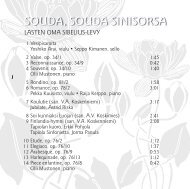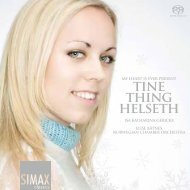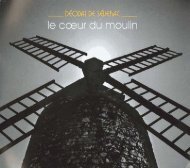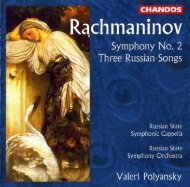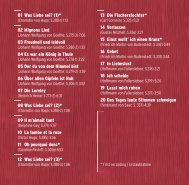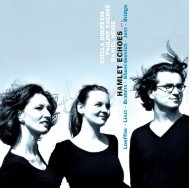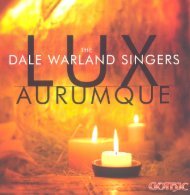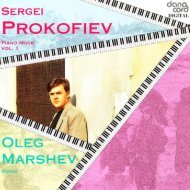Create successful ePaper yourself
Turn your PDF publications into a flip-book with our unique Google optimized e-Paper software.
"Hearing Faurt's Ryrriem as he inten<strong>de</strong>d it instrumentation is restrained and mellowv:<br />
to be performed would be a revelation to divi<strong>de</strong>dviolas and cellos, basses, harp, timpani<br />
most people." - Robert Orledge, Gabriel and organ, with a solo violin in the Snnctlts.<br />
Fn'nnr;, p. 110<br />
The strings - probably no more than a<br />
handfid at the first performance - mostly<br />
double the organ, which plays throughout<br />
It is one of musical history's mischances that like a Baroque continuo.<br />
the Faurt Reqrriem was for almost a century Faurt then prepared an expan<strong>de</strong>d version,<br />
known and performed only in a version with first given in January 1893. This inclu<strong>de</strong>d two<br />
fidl orchestra for which Faurt was very possi- extra movements, the Offertoire (written in<br />
bly not responsible; the composer's original 1889) and the Libera me, both calling for<br />
version of the work wvith instrumental ensem- baritone solo; the Libevn me, dating from<br />
ble remained unpublished and, until this 1877, was originally an in<strong>de</strong>pen<strong>de</strong>nt<br />
recording, wvas unperformed since his lifetime. composition for baritone and organ. The<br />
Behind this neglect lies a fascinating story. instrumentation wvas also expan<strong>de</strong>d for the<br />
Faurk began work on the Reqzrierrt in 1887 1893 performance: Faurk ad<strong>de</strong>d horn and<br />
purely, in his own words, 'for the pleasure of trumpet parts to his earlier manuscript, and<br />
it', though the <strong>de</strong>ath of his father in 1885 and violins were incorporated in the In Pnradimm.<br />
of his mother avo years later may well have The trumpet parts are fragmentary and<br />
lent impetus to the composition. He wvas 42 unimportant, but the horns have an essential<br />
years of age, choirmaster at the fashionable role in the Libern me and a useful one<br />
church of the Ma<strong>de</strong>leine in Paris, and gaining elsewhere; their fanfare-like figure in the<br />
a growing reputation as a composer. He com- Snnctus is hard to imagine left out, in fact.<br />
pleted the work early in 1888 and directed The third version of the Reqrriern - the<br />
the premiere on 16th January of that year; the familiar one wvith fdl orchestra - received its<br />
occasion wvas a funeral service at the premiere in July 1900 at the Trocadkro<br />
Ma<strong>de</strong>leine. This 'first version' (of which the Palace un<strong>de</strong>r the conductor Taffanel;<br />
manuscript of all but the Pie Jesrr survives) shortly afterwards Hamelle published vocal<br />
consisted of five movements: the Introit et and orchestral scores. How and wvhy this<br />
ICyrie, Snnctry Pie Jest4 Agnrrs Dei and In third version came about is not clear. In<br />
Paradisilm - a personal selection of texts lay- 1898 Faurt wrote to Hamelle promising to<br />
ing emphasis on rest and peace wvith no prepare the Requiem for publication but<br />
reference to the Day of Judgement. The asking ifhe could <strong>de</strong>legate the piano reduction<br />
W




